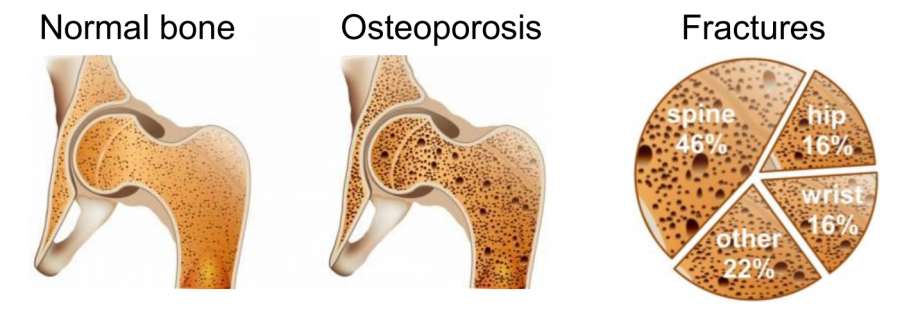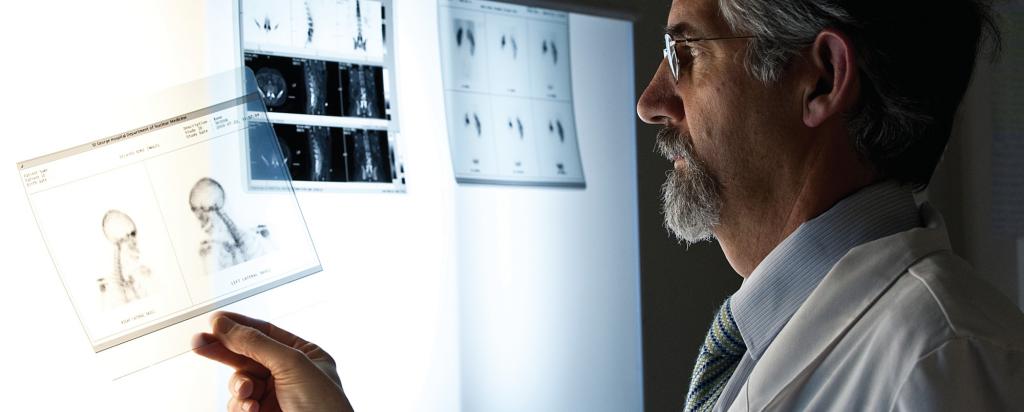

Control of bone mineralisation in osteoporosis
Osteoporosis is a major public health issue, and it has been estimated that total annual cost of osteoporosis/osteopenia in Australia is around $2,754 million.
Work undertaken at the Australian Synchrotron Infrared Microspectroscopy Beamline has led to an improved understanding of the factors that control bone strength, and helped to address the fundamental question of how bone is strengthened by the mineralisation process. This research is providing new information that could improve treatments for these diseases.
Our research

Osteoporosis is characterised by loss of bone strength and changes to bone structure. After age 60, 1 in 2 Australian women will have a fracture related to osteoporosis. Of all osteoporotic fractures in Australia, almost half are vertebral (bones in the spinal column) followed by fractures of the hip and wrist.
A research team led by Prof. Natalie Sims from St Vincent’s Institute of Medical Research, Melbourne, used Synchrotron Infrared Microspectroscopy to analyse the mineral and protein composition of mouse bones, and applied this in the comparison of bone composition of normal animals with that of animals showing a “brittle bone” disease. This disease is due to reduced activity of a key protein that regulates the activity of the bone-forming cells called osteocytes. The infrared data revealed details of the bones’ carbonate and phosphate minerals, as well as the protein matrix composition at different ages of bone growth. The animals with brittle bone disease showed greater mineral deposition in mature bone, and changes in the bones’ protein matrix structure.
The synchrotron infrared results contrasted with results from other methods, such as computerised tomography, which had not shown differences in the density of the bone, or in the bones’ complex internal structure between normal and diseased mice.
In combination, these results show that the brittle bone disease is not a result of reduced bone density, but is due to the deposition of weaker bone material.
The impact
Nearly two million Australians (approximately 10% of the population) currently have an osteoporosis-related condition, and three quarters of these are women. With an increasing life expectancy the proportion of Australians with osteoporosis is expected to increase. This research will provide new information that could improve treatments for many disorders of the skeleton, particularly osteoporosis, and childhood bone disorders such as osteogenesis imperfecta. This aligns with the national science and research priorities of Australia in the field of Health.